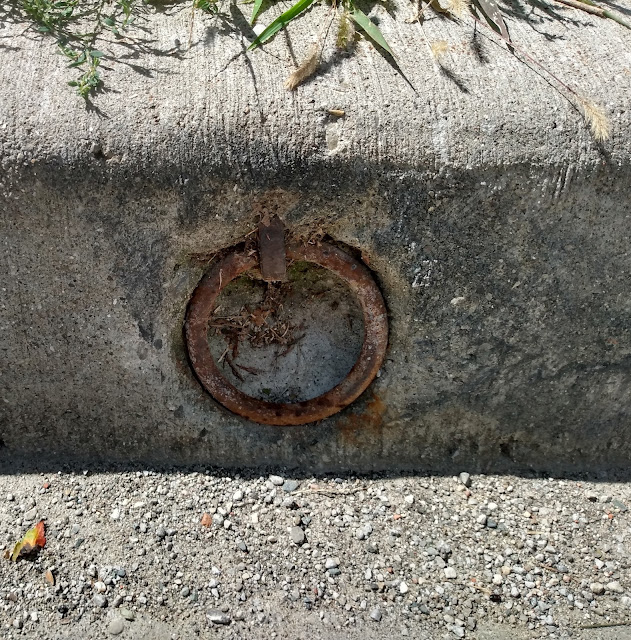Believe it or not, I just went to Ripley.
Now why would anyone go to Ripley, Ontario? Well, having spent much time on the Lake Huron coastline, I decided to spend a little time inland. This village of about 600 people in the former Huron Township,* Bruce County, is about 18 km from Point Clark. Such communities as this are often missed by travellers hugging Hwy. 21 and the shoreline.
The Ripley area was founded as a Scottish settlement in the mid-19th century by over 100 families forced to leave the Isle of Lewis during the Highland Clearances. They arrived in 1852, so that 1952 was the centenary of their arrival. This cairn was built that year to honour them:
From the 1850s to the 1870s this remained a farming community, although a post office named Ripley opened in 1857.** But when the Wellington, Grey & Bruce Railway completed a line from Lucknow to Kincardine in 1873, the farms here were subdivided into lots and a station was built. In 1874 the post office name changed to Dingwall but it reverted to Ripley in 1880.
The railroad became the Grand Trunk and later the CNR before the last train ran through on October 31, 1970. Ripley Station was torn down in 1971. Trucks for freight and cars for pleasure had killed the rails.
 |
| Postcard view of Huron Street, Ripley, early 1900s. Author's collection. |
Ripley is the typical Ontario village, built on a grid pattern with some two-storey commercial buildings, churches, and schools in its core and twentieth-century buildings at its edges. Like most small communities, much of the business has died, leaving the deserted and underused business blocks to deteriorate.***
 |
| An unusual paint job and new windows aren't luring businesses back to this old block. |
 |
| The original hotel on this site burned in 1888 and was rebuilt in 1891. Various owners called it the Argyle Hotel, Hodgins' House, Commercial Hotel and Temperance House. Became apartments 1940s. |
 |
| Next to the hotel is the 1890 McInnes Block built by Paul D. McInnes. Note his name and the date. |
 |
| Originally a Continuation School built in 1914. |
 |
| Older school on Jessie Street is now apartments. |
 |
| The usual assortment of churches, at least two of which are homes. Knox Presbyterian, above, closed in 2019, and its documents and records hopefully end up in the archives opening here. |
 |
| Courtesy of Heather Phillips. |
Ripley's best monument, however, may be the impressive war memorial in front of the former Huron Township Hall. The hall itself, built in 1909, was used as a community centre for plays and dances until, in 1997, it became local Council Chambers and Municipal Offices.
 |
| Lewis monument on left and war memorial on right. |
The memorial, unveiled on November 11, 1921, contains 262 names of men from Huron Township who served in World War I, 33 of whom did not return. The memorial was unveiled that long ago day by Gus McLeod, who had spent three years as a POW, and by Wilton Bell, who had lost two brothers in the war.
Names from the second war are mounted on the side:
For complete names, see this blog, written by a modern-day explorer who travels Ontario on his motorbike, recording our war memorials. Bless his heart.
* The Township of Huron-Kinloss was formed on January 1, 1999 through the amalgamation of the townships of Huron and Kinloss and the towns of Ripley and Lucknow.
**Named after a town in Derbyshire, not on Lewis.
***Having said that, you need to eat at Ripley's FIG Studio Kitchen. Not just the best food in Ripley. "Food Is Good" provided one of the best lunches I've had anywhere in years. I do not provide 5* reviews for just anyone.

























































